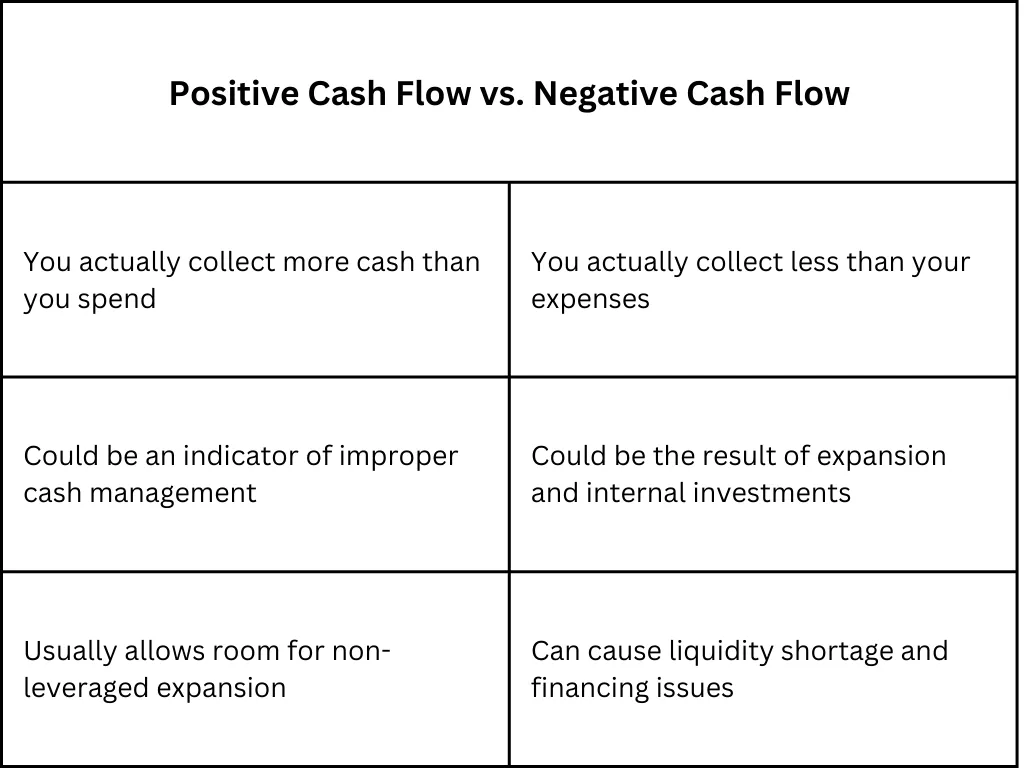Understanding Cash Flow And How It Impacts Your Small Business
Understanding cash flow is a crucial first step in organizing your company's finances. It will not only give you essential insights into your small business’s liquidity but also help you strategically plan ahead. In this article, we summarized everything to know about the matter—read on to find out everything.
What Makes Cash Flow Important?
Every firm generates and expends cash; therefore, it's crucial that you comprehend how crucial cash flow is to your corporation. By performing a cash flow analysis, you may determine if a firm earns enough cash to pay its obligations and current costs.
If your company has a positive cash flow, it signifies that more money is coming in than is leaving. In contrast, a negative cash flow indicates that your company is running a cash deficit.
Your company's success is often dependent on your capacity to sustain a positive cash flow.
When your company experiences a negative cash flow, it must find other ways to pay its bills and costs, such as using cash reserves. Your firm will ultimately run out of cash if it keeps operating without bringing in more revenue than it is spending.
Negative cash flow and a lack of cash reserves put you in danger of missing payments, and you may need to take out further loans or find other sources of funding to keep your company afloat.
Understanding cash flow is crucial for a business because it identifies trends and offers information that can be utilized in decision-making.
Use Wafeq accounting system to keep track of cash flow and manage all your financial data through more than 30 reports.
Use Wafeq accounting system to keep track of cash flow and manage all your financial data through more than 30 reports.
How Cash Flow Impacts Your Small Business
One of the biggest causes of business failure is a lack of cash flow. As a result, it's critical to understand how your business's cash flow affects it in addition to recording it in bookkeeping.
It's crucial to first comprehend the distinction between profit and cash. Cash is the real money you have available, whereas profit is an accounting concept for financial benefit.
Let's assume you charged a client SAR 1,000 for the service you did. Once the invoice is sent, some businesses will count that SAR 1,000 as profit.
You won't receive the SAR 1,000 cash until you collect it. It is essential to comprehend the distinction between profit and cash since it highlights how crucial it is to recover your unpaid accounts receivable.
Companies' cash flow will suffer if they are unable to recover past-due bills and reconcile accounts receivable. Your capacity to settle debts and run the business effectively is impacted when customers pay you later than expected or do not pay you at all.
Also, if you have poor cash flow as a result of customer payment problems and don't pay your debts on time, it can be difficult for you to obtain a company loan in the future.
Your company's capacity for growth is also impacted by cash flow. A healthy cash flow results in more cash to invest in your business development plan's expenses, like new equipment or a second location.
You have greater freedom to reinvest the more money you bring in. Similar to negative cash flow, it causes you to spend all of your cash on payables rather than expanding your company.
Read more about: 9 Fundamental Accounting Principles for Small Businesses.
Positive And Negative Cash Flow Meaning
Businesses are impacted in various ways by positive and negative cash flow. Periods of positive cash flow indicate that your company is taking in more money than it is spending.

Periods of negative cash flow might indicate a number of factors, including developing your company via purchases of new assets or equipment, having trouble with collections, or just operating a failing enterprise.
Take the above expansion as an example. The fascinating thing about this circumstance is that you were able to invest in growth because of positive cash flow, but as soon as you start the expansion, you'll face times of negative cash flow because of the extra expenses.
As long as your cash flow starts moving back into the positive following the expansion, this trend is typical and a sign of a thriving firm.
Your cash flow statement's meaning requires more than a simple numerical analysis. To properly understand what the study indicates for your company's financial health, you must provide context.
Read more: Cost Competitiveness In Business: How To Win The Race. How To Create And Follow A Budget For Your Small Business In 8 Steps.
Takeaways for Cash Flow Management
For all organizations, managing cash flow is essential. You might be in a better position to make wiser strategic choices if you understand how money moves through your firm and what those implications are for the whole business.
For instance, even if your business has a large cash reserve today, if you continue to run a cash flow deficit, you will eventually exhaust your reserves and be forced to cease down or take out a loan.
Finding the inefficiencies in your cash flow can provide you with the knowledge you need to make adjustments, such as cost reductions or a focus on receivables collections.
Use Wafeq - an accounting system to keep track of debits and credits, manage your inventory, payroll, and more.
Use Wafeq - an accounting system to keep track of debits and credits, manage your inventory, payroll, and more.


.png?alt=media)









